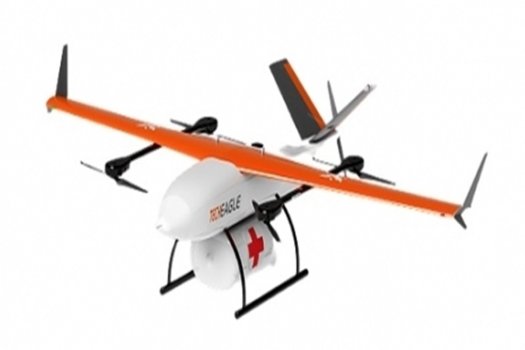K
Kathleen Martin
Guest
The landscape of the Indian healthcare sector is a unique one. On one hand, rapid digitization and technological transformations are redefining the urban healthcare space. On the other hand, large swathes of the rural populace live in hard-to-reach areas with no access to even primary healthcare facilities. According to the facts – 70 percent of India’s population is concentrated in the rural areas where only 3 percent of the country’s doctors live. These grim figures lay bare the immediate need to address the healthcare needs of the country’s rural population.
As technology continues to make breakthroughs in every sector, India can soon realize its dream of universal healthcare access. Unmanned aerial vehicles, commonly known as drones are giving new life to food delivery, agriculture, real estate, many other sectors and healthcare are no exception. The concept of on-demand drone delivery has become the country’s revolutionary innovation that can manifest the long-pending agenda of providing equal healthcare access to save and improve lives.
Endless transportation network
Transportation barriers are the leading cause of lack of healthcare access. Drones are successful in overcoming the connectivity challenges and they can positively impact the lives of millions living in remote and inaccessible areas. Since drones work on coordinates they can easily reach far-flung areas such as mountains, valleys and forests and make timely delivery of life-saving drugs, urgent supplies, medications etc. Areas that were earlier cut-off by road and weren’t feasible to reach by large helicopters and airplanes can now be reached, thereby extending the country’s transportation network in strengthening the country’s healthcare scenario.
Just like telemedicine is solving the problem of availability of doctors at remote locations, on-demand drone delivery resolves the issues of rapid sample collection and diagnosis. It comes as a boon to healthcare as drones can deliver samples to path labs in a few hours to reduce TAT from 3-5 days to 6-7 hours. Similarly, delivery of blood, vaccine, medicines, and anti-venoms in the first golden hour of the patient in remote locations that can be delivered in just a few hours by on-demand drone delivery.
Continue reading: https://www.financialexpress.com/healthcare/healthtech/how-drones-are-helping-to-save-and-improve-lives/2403605/
As technology continues to make breakthroughs in every sector, India can soon realize its dream of universal healthcare access. Unmanned aerial vehicles, commonly known as drones are giving new life to food delivery, agriculture, real estate, many other sectors and healthcare are no exception. The concept of on-demand drone delivery has become the country’s revolutionary innovation that can manifest the long-pending agenda of providing equal healthcare access to save and improve lives.
Endless transportation network
Transportation barriers are the leading cause of lack of healthcare access. Drones are successful in overcoming the connectivity challenges and they can positively impact the lives of millions living in remote and inaccessible areas. Since drones work on coordinates they can easily reach far-flung areas such as mountains, valleys and forests and make timely delivery of life-saving drugs, urgent supplies, medications etc. Areas that were earlier cut-off by road and weren’t feasible to reach by large helicopters and airplanes can now be reached, thereby extending the country’s transportation network in strengthening the country’s healthcare scenario.
Just like telemedicine is solving the problem of availability of doctors at remote locations, on-demand drone delivery resolves the issues of rapid sample collection and diagnosis. It comes as a boon to healthcare as drones can deliver samples to path labs in a few hours to reduce TAT from 3-5 days to 6-7 hours. Similarly, delivery of blood, vaccine, medicines, and anti-venoms in the first golden hour of the patient in remote locations that can be delivered in just a few hours by on-demand drone delivery.
Continue reading: https://www.financialexpress.com/healthcare/healthtech/how-drones-are-helping-to-save-and-improve-lives/2403605/

